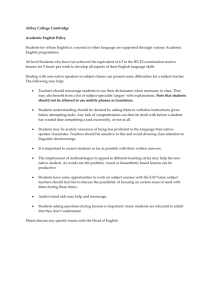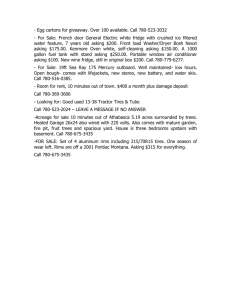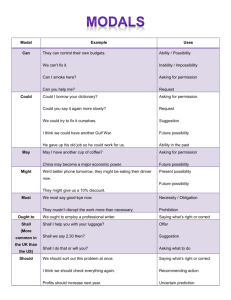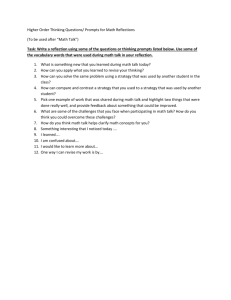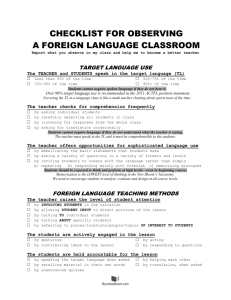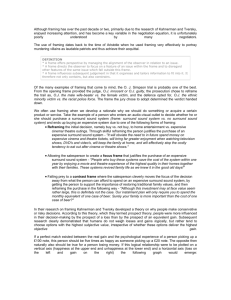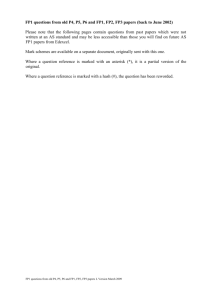Framing Essential Questions
advertisement
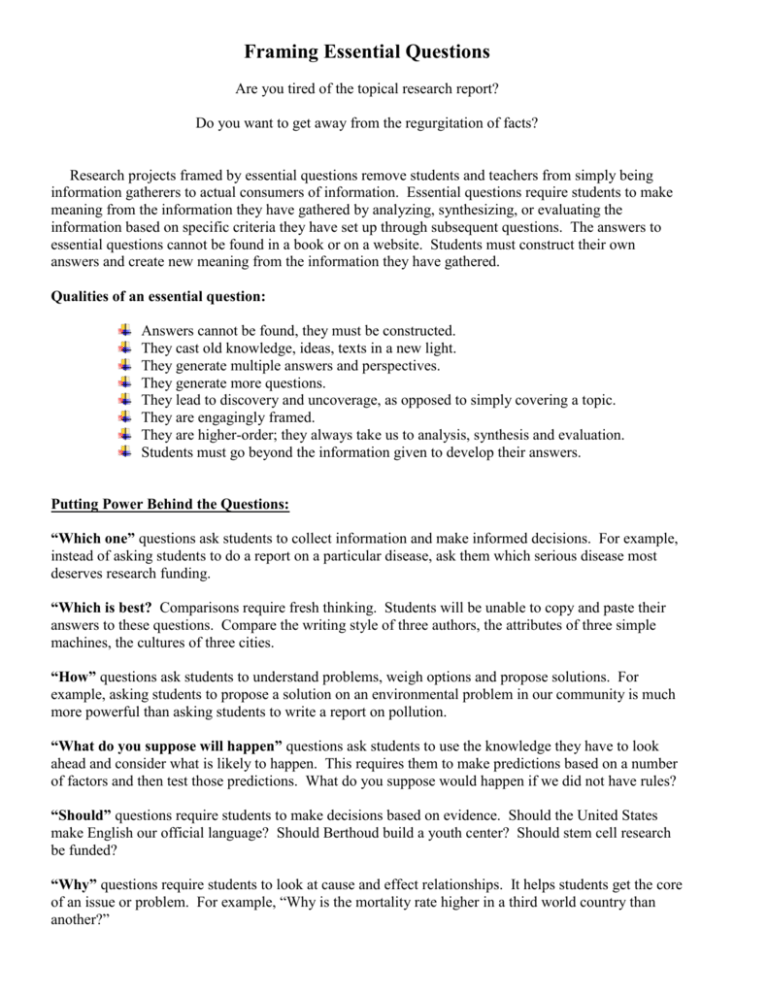
Framing Essential Questions Are you tired of the topical research report? Do you want to get away from the regurgitation of facts? Research projects framed by essential questions remove students and teachers from simply being information gatherers to actual consumers of information. Essential questions require students to make meaning from the information they have gathered by analyzing, synthesizing, or evaluating the information based on specific criteria they have set up through subsequent questions. The answers to essential questions cannot be found in a book or on a website. Students must construct their own answers and create new meaning from the information they have gathered. Qualities of an essential question: Answers cannot be found, they must be constructed. They cast old knowledge, ideas, texts in a new light. They generate multiple answers and perspectives. They generate more questions. They lead to discovery and uncoverage, as opposed to simply covering a topic. They are engagingly framed. They are higher-order; they always take us to analysis, synthesis and evaluation. Students must go beyond the information given to develop their answers. Putting Power Behind the Questions: “Which one” questions ask students to collect information and make informed decisions. For example, instead of asking students to do a report on a particular disease, ask them which serious disease most deserves research funding. “Which is best? Comparisons require fresh thinking. Students will be unable to copy and paste their answers to these questions. Compare the writing style of three authors, the attributes of three simple machines, the cultures of three cities. “How” questions ask students to understand problems, weigh options and propose solutions. For example, asking students to propose a solution on an environmental problem in our community is much more powerful than asking students to write a report on pollution. “What do you suppose will happen” questions ask students to use the knowledge they have to look ahead and consider what is likely to happen. This requires them to make predictions based on a number of factors and then test those predictions. What do you suppose would happen if we did not have rules? “Should” questions require students to make decisions based on evidence. Should the United States make English our official language? Should Berthoud build a youth center? Should stem cell research be funded? “Why” questions require students to look at cause and effect relationships. It helps students get the core of an issue or problem. For example, “Why is the mortality rate higher in a third world country than another?” Moving up the Bloom’s Taxonomy ladder by avoiding the lower level “What is” questions. Analysis: Analysis questions require students to see patterns, recognize hidden meaning organize, and identity components within. Question prompts: connect, classify, compare, select, infer Example: Explain why Ancient Egyptians dressed the way they did. Synthesis: Synthesis questions require students to use old ideas to create new ones, predict, draw conclusions about a concept, and relate knowledge from several areas. Question prompts: design, invent, formulate, prepare, integrate, substitute, plan, create, draw conclusions Examples: What would have happened if Lincoln was shot in the first month of the war? If JFK had survived, what would be the two most likely differences in the United States today? Evaluation: Evaluation questions require students to compare, discriminate between ideas, and make choices based on evidence. Question prompts: decide, rank, recommend, convince, select, judge, support, conclude, summarize, assess Examples: In which European country should our family spend a 6 month visit? President Bush stated that drilling in ANWAR is a great way to get out of our current oil shortage. How can you convince me that he is wrong? From the Essential Question to the Foundation questions: Once the stage has been set with the essential question, students will then need to understand that in order to answer the big question, they will need to identify and address many smaller questions that ultimately relate back to the Essential question. These foundation questions are the “What is” type questions that guide students. The foundation questions set up the scaffolding for the research. The answers to the foundation questions provide the facts that help build the answer to the essential question. For example, if the essential question asked student to decide which city would be the best for their family to move to, the question could not be answered without asking, “What does best mean?” “What would be important to my family?” etc. Students would then base their research on the criteria they cam up with. If climate was listed as part of the criteria, students would ask themselves “What do I need to know about climate?” Sources: http://www.fno.org/oct97/questions.html http://www.biopoint.com/inquiry/ibr.html http://www.sasaustin.org/library/ResearchPaper.htm Jamie McKenzie, Beyond Technology: Questioning, Research and the Information Literate School, FNO Press 2000

